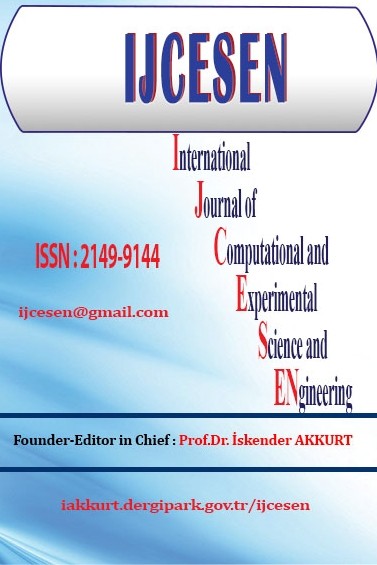Investigation of Various Infectious Diseases in Turkey by Mathematical Models SI and SIS
Investigation of Various Infectious Diseases in Turkey by Mathematical Models SI and SIS
Infectious Mathematical Model, Prediction,
___
- [1] Steere AC (1989) Lyme disease. N Engl J Med 321: 586–596.
- [2] Hilbi H, Jarraud S, Hartland E, Buchrieser C (2010) Update on Legionnaires’ disease: pathogenesis, epidemiology, detection and control. Mol Microbiol 76: 1–11.
- [3] Taff ML, Siegal FP, Geller SA. Outbreak of an acquired immunodeficiency syndrome associated with opportunistic infections and Kaposi's sarcoma in male homosexuals. Am. J.Forensic Med.Pathol. 1982 Sep.3(3):259-64.
- [4] Zuckerman AJ. The Elusive Hepatitis C Virus. BMJ. 1989 Oct 7;299(6704):871-3.
- [5] Drosten C, Günther S, Preiser W, van der Werf S, Brodt HR, Becker S, Rabenau, H, Panning M, Kolesnikova L, Fouchier RA, Berger A, Burguière AM, Cinatl J,Eickmann M, Escriou N, Grywna K, Kramme S, Manuguerra JC, Müller S, Rickerts V, Stürmer M, Vieth S, Klenk HD, Osterhaus AD, Schmitz H, Doerr HW. Identification of a Novel Coronavirus in Patients with Severe Acute Respiratory Syndrome, N Engl J Med. 2003 May 15;348(20):1967-76. Epub 2003 Apr 10.
- [6] Masuda N, Holme P. Predicting and controlling infectious disease epidemics using temporal networks. F1000Prime Rep. 2013;5:6. doi: 10.12703/P5-6. Epub 2013 Mar 4.
- [7] Lih-Ing W. Roeger. Dynamically Consistent Discrete-Time SI and SIS Epidemic Models, Discrete and Continuous Dynamical systems, supplement,653-662, 2013.
- [8] Keeling MJ, Rohani P: Modeling Infectious Diseases in Humans and Animals. Princeton: Princeton University Press; 2007.
- [9] www.thsk.gov.tr/component/k2/zoonotik-ve-vektorel-hastaliklar-daire-baskanligi-istatiksel- verileri.html
- [10] www.thsk.gov.tr/component/k2/tuberkuloz-daire-baskanligi-istatiksel-verileri.html
- [11] www.thsk.gov.tr/component/k2/asi-ile-onlenebilir-hastaliklar-daire-baskanligi-istatiksel-verileri.html
- [12] Ergen K., Çilli A. and Yahnioğlu N., Predicting Epidemic Diseases using Mathematical Modelling of SIR,DOI:10.12693/APhysPolA.128.B-273.
- Başlangıç: 2015
- Yayıncı: Prof.Dr. İskender Akkurt
Unimodal Optimization of Axially Compressed Shear Deformable Columns
Environmental Radiation Doses from Patients Undergoing Tc-99m DMSA Cortical Renal Scintigraphy
Osman GÜNAY, Mucize SARIHAN, Evrim ABAMOR, Onur YARAR
Shuang ZHANG, Huiqing LIU, Jie BAI
Investigation of Various Infectious Diseases in Turkey by Mathematical Models SI and SIS
Guessoum MELİA, Chelghoum NADJAT, Haddaoui NACERDDİNE
A Framework for Query Optimization Algorithms for Biological Data
Khalid Mohammad JABER, Nesreen A. HAMAD, Fatima M. QUIAM
Experimental Raman study of N-phenyl-3-para nitrophenyl isoxazolidine-5-carbonitrile
Karima BOUDHAR, Mahdi DEBIECHE
Excitation Functions for the Proton Irradiation on 45ScTarget
Susan SHUKUR NOORI, İskender AKKURT, Nurdan Karpuz DEMIR
Full reference video quality evaluation using foveated vision and multiple fixation points
